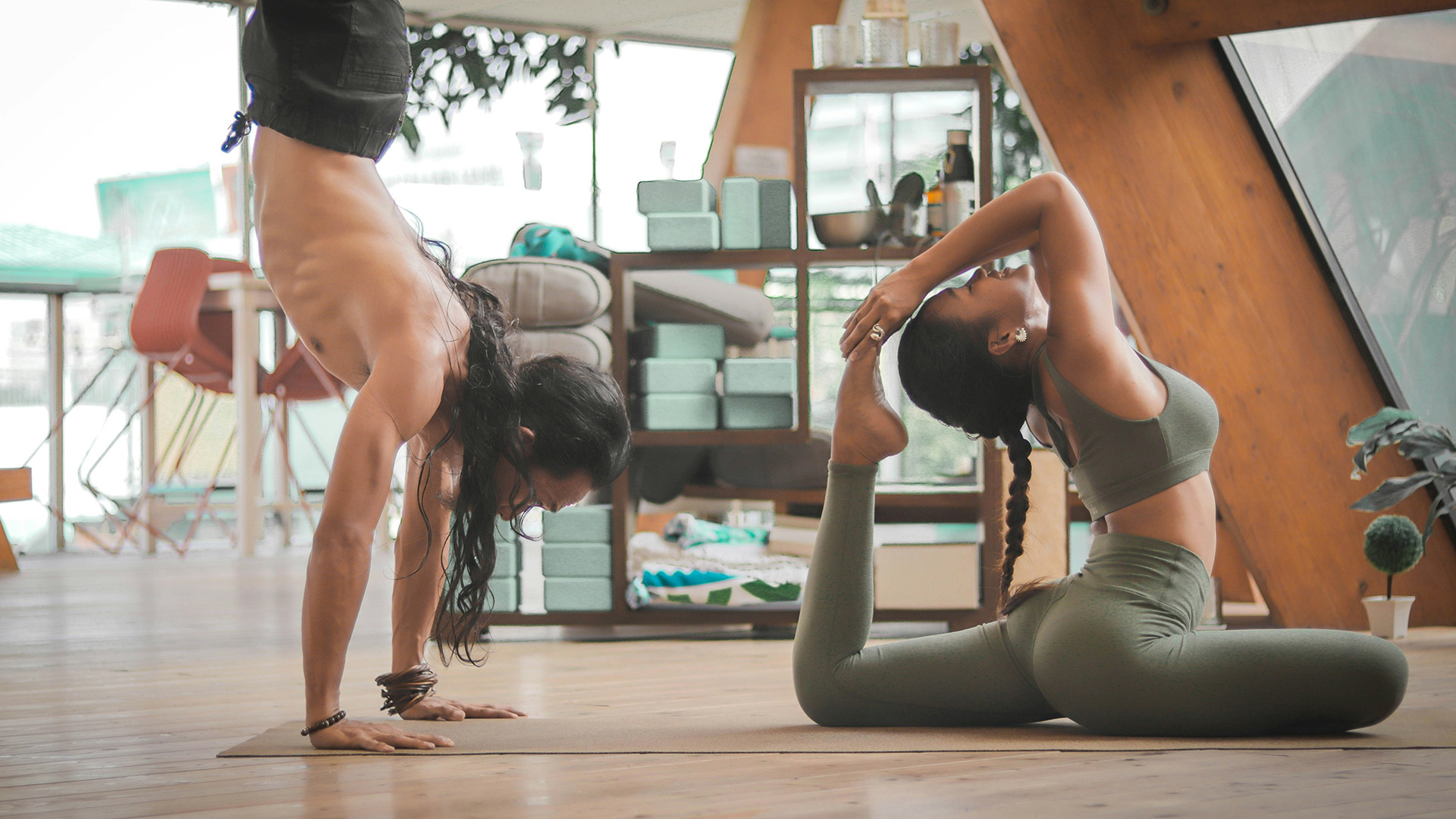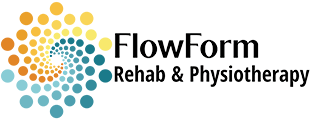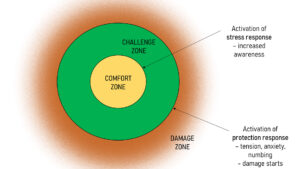Movement for Healing: How do we choose?

There are so many wonderful movement practices accessible to us these days, and many people have found great healing through them. This huge amount of choice brings one important question though: How do we choose what is best for us?
In my experience of learning and teaching many different styles of movement therapy, from yoga to Qi gong, Tai chi, Pilates, and various physiotherapeutic exercises for fitness, healing and rehabilitation, I have come to learn one important lesson about movement: There is no movement that is right or wrong for all people.
Prescribing movement for healing
When we become practitioners and teachers of certain movement styles, and especially when we learn the background of human anatomy and physiology, we are often quick to label certain postures and movements as ‘right’ or ‘wrong’, as ‘good for you’ or ‘bad for you’, as ‘safe’ or ‘unsafe’. These labels have no value. Of course there are certain movements or exercises that are wrong for some people because they put those people at risk of injury, but that does not mean the exercise is wrong in itself. It might be hugely beneficial to others with different capacities.
Over the years, the prescriptions of what is good and healthy have changed tremendously. Many years ago, nobody would stretch to become more flexible. Then, people started stretching, labeling it wrong to move at all while in a stretch. Then “dynamic stretching” came along, where people move around within a stretch. And now we have multiple different types of stretching and gliding exercises, some static and some dynamic.
Our understanding of what is good for our bodies is continuously evolving. And when teaching or prescribing movement, it is essential that we continue evolving too and free ourselves from the notion that there are certain movements that are good for everyone, and others that aren’t. Most importantly, it is essential that we understand that every person we help has individual needs, and that these needs have to be evaluated in detail before we can make any recommendations.
Bodies have unique needs
Every single person has a unique body with unique needs. Every single person, even if they have the same job or exercise program as their friend of the same age and gender, has unique ways in which their body works, moves and compensates for injuries and imbalances. Especially when there has been a recent injury or surgery, this unique body’s condition and needs have to be identified before any prescriptions can be given.
What about people who do not have access to detailed professional evaluations? With the growing problem of medical costs, many people cannot afford to have detailed evaluations, and with high workloads, many professionals don’t have the time and space to do them. There is a huge need for free public access to health information and support, and the internet is full of exercise prescriptions for all kinds of problems, pain, injuries and goals.
It is important that we learn how to discern which of these are of good quality, have the freedom to be modified for us, and, most importantly, which of them will actually work for our bodies.
Discerning what we need
When we use movement to help ourselves heal, there are two important factors for us to consider: What our bodies can do, and what the movement practice aims to achieve.
For our bodies to heal, the movement it does has to feel safe and nourishing. If there is any fear or pain while doing the movement, or even just discomfort that triggers some anxiety, our bodies are thrown into survival mode, and are no longer in healing mode. In that moment, we have to get our bodies back to feeling safe so that it comes back to healing mode, otherwise the movement will not be healing and we are at risk of causing damage. Movements should feel safe first before they can be nourishing and healing for our bodies.
This does not mean that all movements have to be easy to do. Staying in our comfort zone does not challenge our bodies enough to change and build strength. So how do we leave the comfort zone while still staying safe and relaxed?
Zones of change
I believe there is another zone just beyond the comfort zone. When you leave your comfort zone, you enter the challenge zone. As your stress response gets activated, you will feel an increase in awareness, you pay attention more, you work a little harder, you feel almost anxious because this is more difficult. This is not a bad thing – a good activation of the stress response challenges your body enough to create change. Once you reach the point of feeling fear and anxiety, your body goes into a protective response and you have jumped the boundary between the challenge zone and the damage zone. This is when the stress becomes too much and you start creating damage.
When you stay within your comfort zone, there is no challenge to your existing movement habits and patterns and no change will happen. When you move within the challenge zone, your brain is learning new movement patterns and your body still feels safe. Learning and healing can only happen when your body feels safe. When you have crossed over into the damage zone, you have lost the healing effect of the movement practice, since your body cannot heal or learn new things when it is busy protecting itself. A muscle cannot strengthen when it is holding on in protection, because it has no freedom to move and not enough blood flow to produce energy. A brain in fear and anxiety restricts its cognitive function for survival and cannot learn new patterns. A nervous system in stress mode will not accept a new movement as part of your lifestyle because it isn’t convinced that it is safe to do so.
The challenge is to find this balance for your own body, and it will be different for each and every person. When watching people exercise in a gym class, it is normal that every person does the same exercise in vastly different ways – in the way that suits their own body’s needs and capacity on that day.
Listening to our bodies
To become better at discerning what is helpful for our healing, we need to become very good at listening to our bodies. A life of stress and bulldozing our sensations disconnects us from feeling our body’s subtle signals, and this is one of the main reasons most of us do movement practices that aren’t necessarily nourishing for us.
Reconnecting to our sensory selves is the first step in learning what movement practices will help our bodies heal. Simple sensory exercises can help, but on the most basic level, we must learn to feel deeper into what our bodies feel in the moment. The better we know ourselves, the better we can discern what we need to heal.
Whenever we do any new movement, whether that is in the gym, in a class or at home watching an online video, we must allow ourselves the freedom to feel into our bodies as we are doing the movement and test it out first. See what happens in your body when you move – does that feel good? Does it feel challenging? Does it feel like something your body needs?
Learn to discern what moving between zones feels like. When you feel a heightened awareness, like you are listening more closely into your body and your brain is working out how this feels, you have entered the challenge zone. When you feel anxiety and your body is resisting the movement, even with a just little bit of clenching or tension here or there, you have left the challenge zone and are now at risk of damage. At that point, you need to slow down, feel deeper and find a way you can do the movement in a way that keeps you in the challenge zone, and keeps your body feeling safe enough to be challenged.
Safe challenges
Any injury, surgery or memory of pain will trigger anxiety with new movements. Any sensitivity in your nervous system, limiting beliefs or emotional load related to your body’s capacity to be strong and resilient will trigger anxiety with new movements. These situations often cause anxiety or fear to be triggered way before any physical damage can happen, as a natural protective response. This does not mean however that you should continue “pushing through”, because the presence of anxiety means your nervous system has left healing mode. In that moment, it is best to back off just a tiny little bit and find your challenge zone.
There are many healing practices that push people beyond their challenge zone and can still be beneficial. From breathwork practices that purposefully activate the nervous system’s stress mode to exposure therapies to help people with phobias and anxieties, these can be very helpful. It is my recommendation that these practices are only done in times when people have high resilience – that is, they can easily regulate themselves afterward. A body that is physically resilient can easily heal any minor damage, and a nervous system that is resilient can regulate itself back to a state of calm after such a practice, without feeling the consequences for days and weeks afterward.
Knowing ourselves is the best way to choose what we need to heal ourselves. Knowing our current level of resilience, our current needs, and feeling where our nervous system is at in the moment we are being challenged – these are skills invaluable on our healing journeys, whether the healing we are aiming for is physical, mental, emotional or spiritual.

